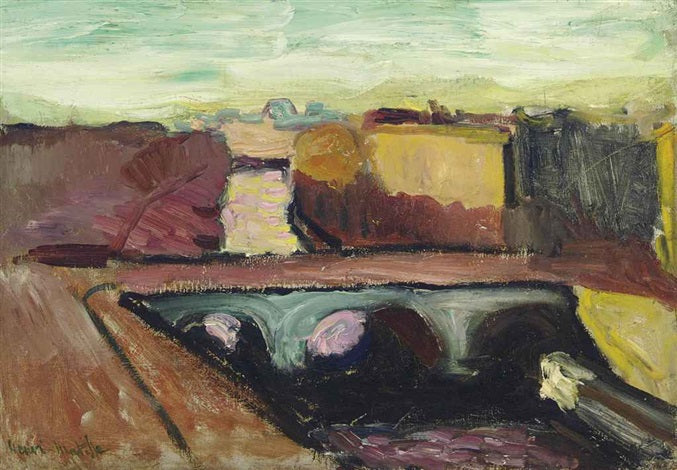Description
Henri Matisse, one of the most influential artists of modern art, offers us with "Vue De La Seine Le Pont Saint Michel" from 1904 a captivating window into Parisian life at the beginning of the 20th century. This oil on canvas, measuring 68x47 cm, captures a scene with a mastery that reveals intrinsic aspects of the Fauvist style for which Matisse is known. The work, however, is situated at a transitional moment in the artist's career, where he still maintained certain post-impressionist traits before fully embracing the bold and vibrant appearance of Fauvism.
The painting offers a serene view of the River Seine and the iconic Saint Michel Bridge, distinctive features of the Parisian urban landscape. Matisse employs a color palette that unfolds in soft and natural tones, dominated by grays, greens, and blues. We do not find the bright and intense colors typical of his more mature work, but rather a subtle balance that manages to convey the tranquil and luminous atmosphere of the river and its surroundings.
Observing the composition, one notices Matisse's ability to capture the essence of the place with an apparent simplicity that, in reality, reflects a deep understanding of light and perspective. The structure of the Saint Michel Bridge is presented with clear and defined lines, though softened in a way that almost seems to blur into the surroundings. The buildings framing the background and the banks of the Seine play a crucial role, creating an architectural frame that guides the viewer's eye to the center of the scene without imposing a strict narrative.
On the bridge, human figures can be perceived, but they are treated in a schematic, almost abstract manner, focusing more on their presence as elements in the landscape rather than as individual protagonists. This underscores an approach that centers on the whole, on the collective atmosphere of the city, rather than on specific details.
The treatment of the water in the work is particularly noteworthy. Matisse manages to suggest the gentle movement of the river with brushstrokes that create subtle variations in color and texture. The reflection of the bridge and adjacent buildings in the water offers a sense of depth and continuity that enriches the overall composition.
Diving deeper into the historical and artistic context, this work by Matisse is part of a series of urban landscapes that the artist created during the early years of the 20th century. This stage was crucial for his artistic development, experimenting with different approaches and techniques that would eventually consolidate him as a central figure in the evolution of modern art. Compared to other works from the same period, such as his views of Collioure or Saint-Tropez, "Vue De La Seine Le Pont Saint Michel" stands out for its more contained and almost introspective representation of the Parisian urban environment.
It is fascinating to observe how, through an apparently simple work, Matisse can convey such a profound sense of place and time. The piece offers us not only a glimpse of the topography of Paris but also a reflection of Matisse's artistic journey towards the exploration of color and form that would define much of his later career. In "Vue De La Seine Le Pont Saint Michel," we can appreciate the germ of an artist in the process of transformation, whose vision would revolutionize the way painting was understood in the 20th century.

